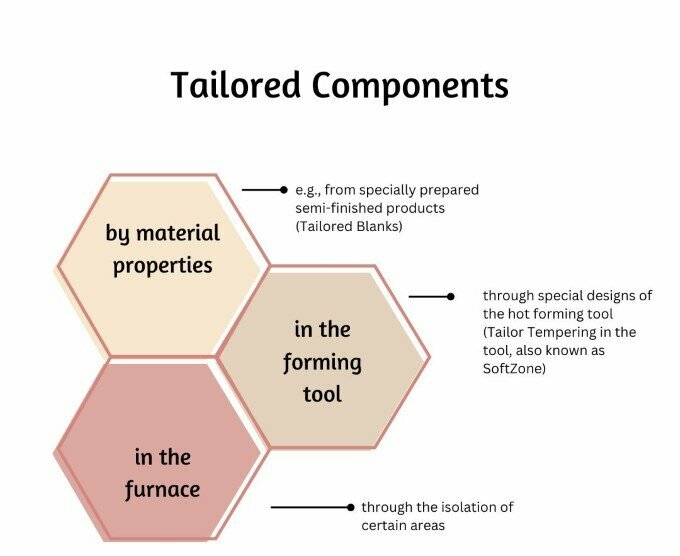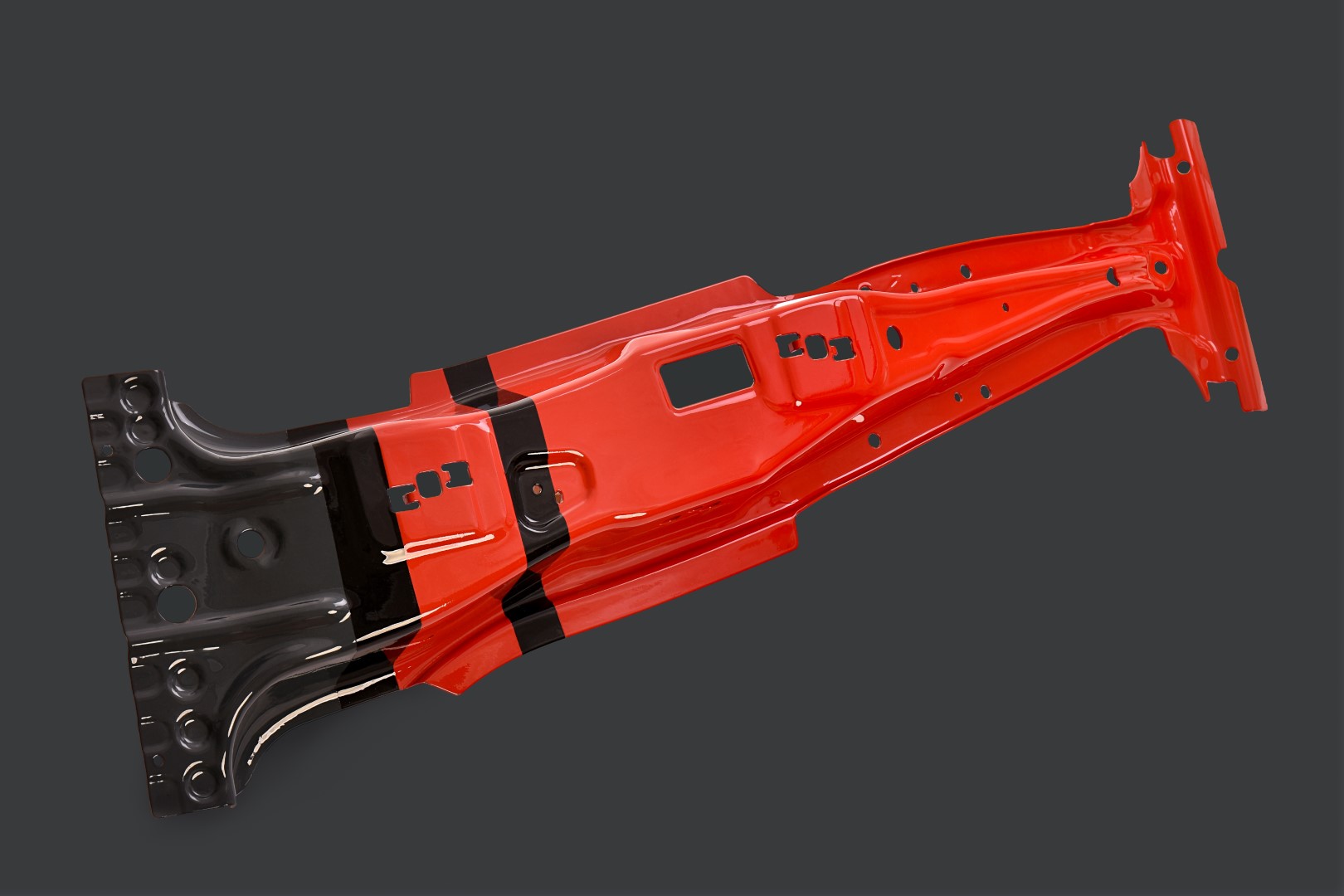Customized Components at a Glance
Customized components are parts that are tailored to the respective load situations and requirements of a specific application. This means that they have unique properties that are achieved through special manufacturing techniques. There are two main approaches to producing customized components: geometric grading and microstructural grading.
Geometric Grading - Tailored Blanks
In geometric grading, specially procured semi-finished products, known as “tailored blanks”, are joined together to form a component. Each of these semi-finished products has different material properties, thickness or material quality. This combination allows customized components to be created that can withstand specific loads in the best possible way.
Microstructure Grading - Tailored Tempering
Tailored tempering, on the other hand, is carried out by partial cooling either in the furnace or in the forming tool. This method, known as “tailored tempering”, makes it possible to harden or soften specific areas of a component in order to achieve maximum ductility. In this way, different material properties can be combined in a single component.
The Advantages of Customized Components
The use of customized components offers numerous advantages:
-
Weight Reduction: by specifically adapting to load situations, vehicle weight and material consumption can be reduced, resulting in improved efficiency.
-
Improved Performance: Tailor-made components enable the realization of additional workpiece properties and combinations of component properties within a single component. This leads to better performance and functionality.
-
Cost Efficiency: Reducing the number of components in a vehicle and minimizing the number of forming tools required can lead to significant cost savings.
-
Safety Improvement: Tailor-made components make a decisive contribution to improving safety. By precisely adapting components to specific load scenarios, crash behavior and energy absorption can be optimized in a targeted manner. This enables the construction of vehicle structures that offer improved occupant safety by better dissipating critical forces in the event of an accident.
Applications of Customized Components
Customized components are used in a wide range of industries. They play a particularly important role in the automotive, mechanical engineering and aerospace industries. Here they enable the development of lighter, more efficient and more powerful vehicles and machines.
Customized Components in Hot Forming: Conclusion
Customized components are an outstanding example of innovative manufacturing techniques that can not only reduce production costs, but also increase the performance and efficiency of products. Their wide range of applications and adaptability make them an important component in the modern manufacturing industry. The future will undoubtedly bring even more bespoke solutions and innovations in component manufacturing that will revolutionize the way we develop and use products.

